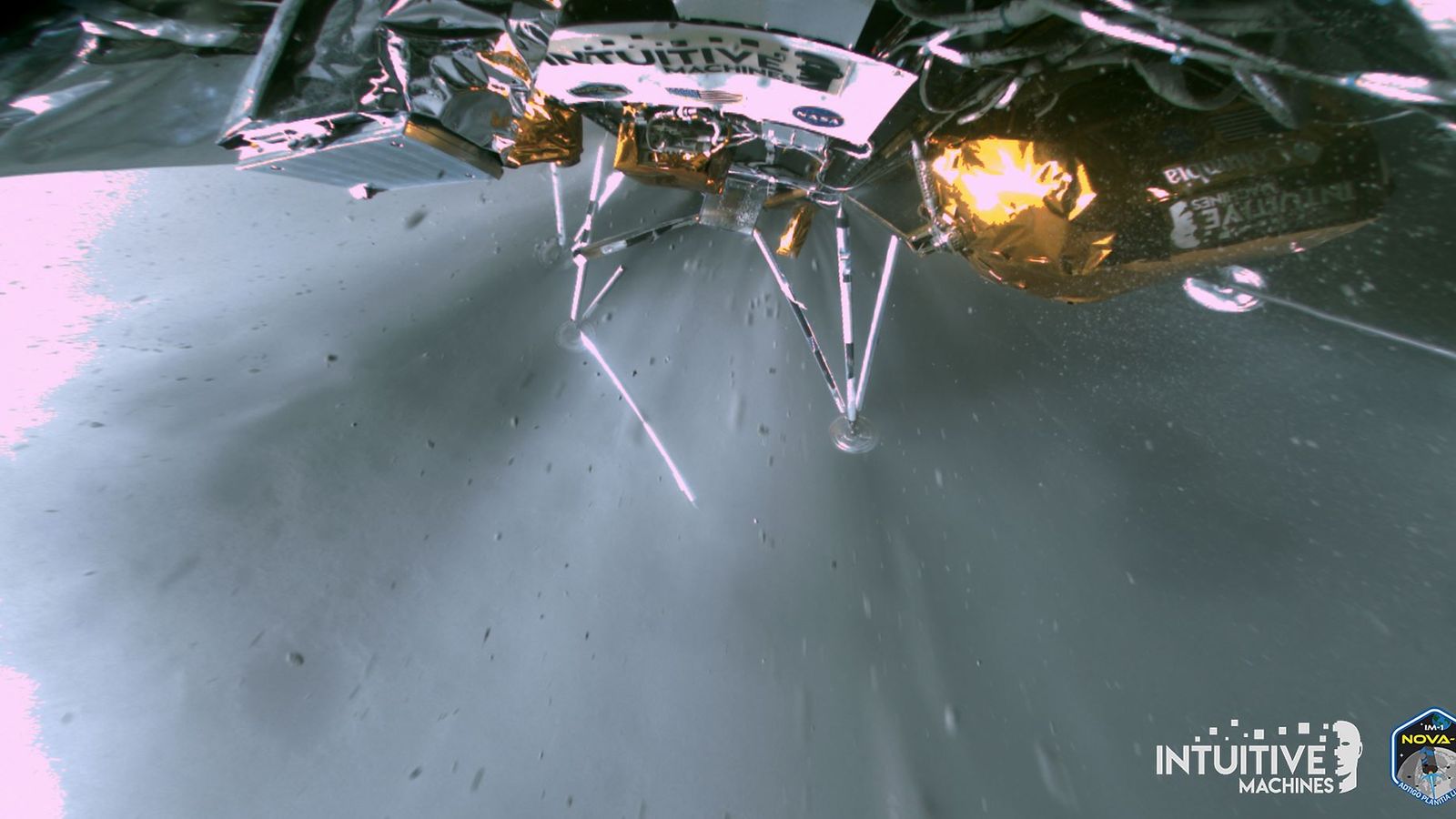Dramatic new images have been released of the Odysseus spacecraft landing on the moon.
The pictures, along with huge amounts of data, have been downloaded just hours before night falls at the lunar south pole and the lander’s batteries run out of power.
Intuitive Machines, the US company behind the mission, said it will now be possible to reconstruct the landing to understand how Odysseus came to rest on its side.
The company also revealed the lander could be revived in 2-3 weeks’ time when the sun rises again. The big unknown is whether the batteries and electronics can survive temperatures that dip below -200C (-328F).
“There are no eulogies planned. Only celebrations,” company co-founder Steve Altemus told a news conference in Houston, Texas.
The first of the new images, taken as the lander touched down, shows at least one of its legs had been shattered, with rocks and dust being blown away at high speed by the force of the rocket engine.
A second photo shows the lander on its side with the dark elliptical shape of a crater around 500m (1,640ft) away. Scientists believe the crater could be two billion years old.
Odysseus mission to be cut short after moon lander’s sideways touchdown
Don’t underestimate the significance of the latest moon landing
Moon landing: US lander successfully touches down in ‘giant leap forward for all of humanity’
Telemetry data shows Odysseus originally landed upright, but then toppled over on a slight slope.
In the low lunar gravity, it took around two seconds for it to come to rest, either on its fuel tank or a computer shelf on the outside of its structure.
Intuitive Machines was paid $118m (£94m) by NASA to take six scientific instruments to the moon.
All have sent back data, despite the lander’s position, and a navigation beacon is now operational that will help future landings.
But the laser navigation system that should have been used for the landing failed because a pin hadn’t been removed on the launch pad in Florida.
Please use Chrome browser for a more accessible video player
“Clearly, it’s something we can fix next time,” Mr Altemus said.
The company has been under pressure to explain why the landing wasn’t perfect, when the far simpler Apollo spacecraft successfully touched down six times in the 1960s and 70s.
Read more:
Odysseus expedition may be cut short
Don’t underestimate significance of latest moon landing
NASA offers chance to send your name to the moon
Mr Altemus said: “We had a different kind of challenge. We were constrained on cost, with a fixed price contract from the government.
“We had a schedule to get this mission completed in the time it takes to get an undergraduate degree. This over-constrained environment forced innovation and this was our first flight of this vehicle.”
In a joint news conference, Intuitive Machines and NASA gave an upbeat assessment of the mission so far.
Dr Joel Kerans, of NASA, said the mission had been a “pathfinder, a first step to get back to the moon. There will be a lot of learning that comes out of it”.
Intuitive Machines is planning a second mission later this year that will carry a drill to hunt for water below the surface of the moon. It will also have a ‘space hopper’ that will fly into deeply shadowed craters where scientists believe there could be large amounts of ice.









